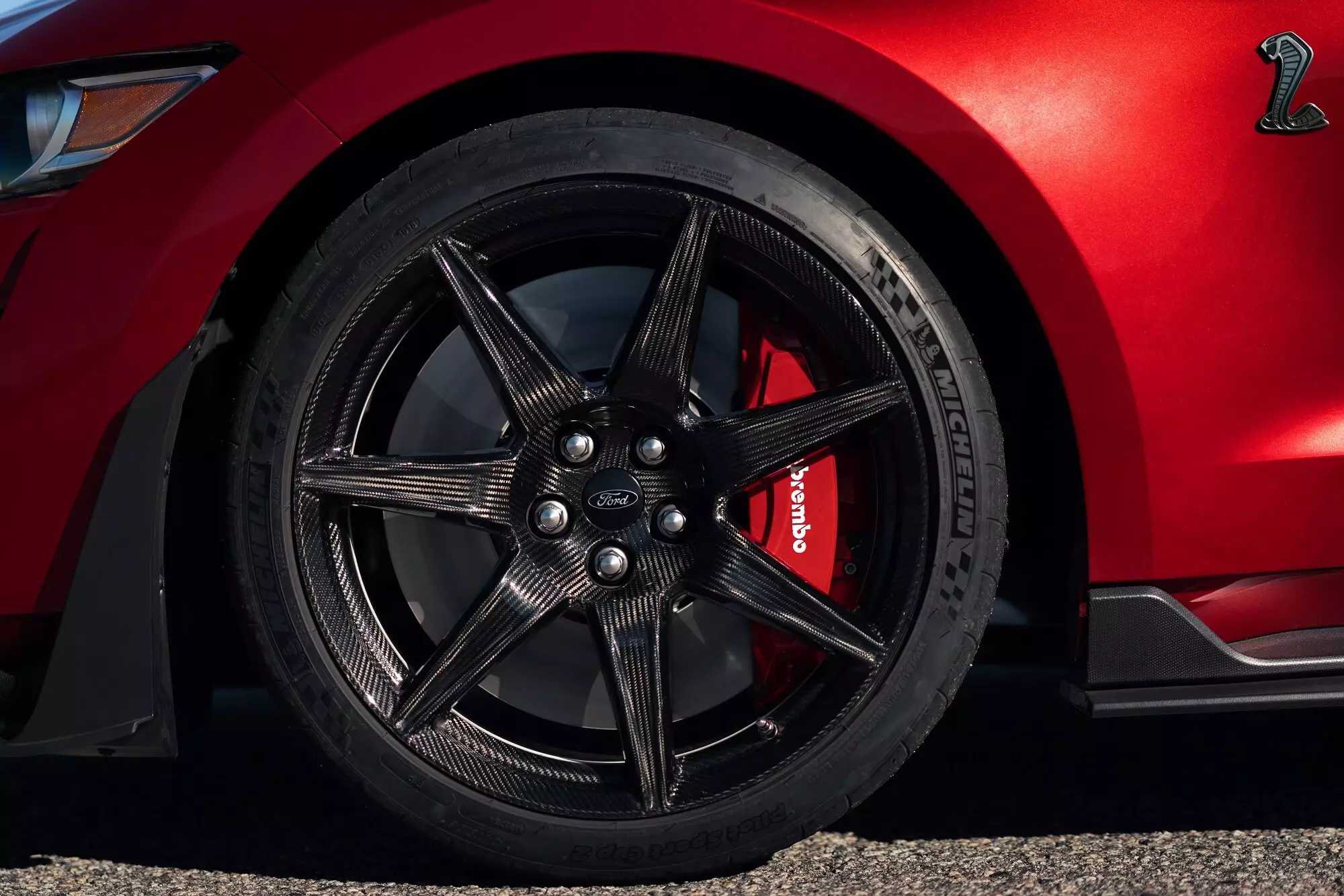THE Ford Mustang Shelby GT500 it practically needs no introduction. The most powerful and fastest Mustang ever features a powerful 5.2 l V8 Supercharged capacity that produces a substantial 770 hp and 847 Nm, numbers that would terrify any tire, plus when only two of the four the GT500 brings are to blame. to deal with them.
You would expect, therefore, that the tightest track-optimized tires would be the most effective at putting the full force of the V8 Supercharged on the asphalt in order to get the best acceleration times, but not…
That's what the North American Car and Driver discovered during the test it made to the GT500. As standard, the muscular sports car comes equipped with Michelin Pilot Sport 4S, but as an option, we can equip it with the more aggressive Michelin Pilot Sport Cup 2, optimized for riding on circuits.
| Acceleration | Michelin Pilot Sport 4S | Michelin Pilot Sport Cup 2 |
|---|---|---|
| 0-30 mph (48 km/h) | 1.6s | 1.7s |
| 0-60 mph (96 km/h) | 3.4s | 3.6s |
| 0-100 mph (161 km/h) | 6.9s | 7.1s |
| ¼ mile (402 m) | 11.3s | 11.4s |
There are no arguments against facts and the measurements carried out by Car and Driver are evident: the Ford Mustang Shelby GT500 is faster to accelerate on road tires than circuit tires.

How is it possible?
Intrigued by the results, the North American publication contacted the head of Shelby GT500 development, Steve Thompson, who was not surprised by the results: “There is no surprise (in the results). It's not unusual to see the Pilot Sport 4S equal the Pilot Sport Cup 2, or even be a little faster.”
Subscribe to our newsletter
It remains to be seen why this happens and Thompson justifies it with several factors that contribute to this counter-intuitive result.
The road tire has thicker tread blocks, capable of better retaining heat, thus increasing traction, which can contribute to a faster start. The track tyre, on the other hand, has been optimized to provide greater lateral grip, a much more important factor in achieving good lap times — the proof is in the 1.13 g of lateral acceleration achieved by the Pilot Sport Cup 2 against 0, 99 g of the Pilot Sport 4S.
The two types of tires end up differing, whether in terms of construction or in terms of components (mix of ingredients to make the rubber), as they have to fulfill different objectives. In Cup 2 the tire shoulders are designed to withstand most of the lateral forces and the tread design at the tire ends is also optimized accordingly. The central section of the tread, on the other hand, turns out to be very similar to that of the road tyre, as the Cup 2 is also approved for use on public roads.
Here's a tip: if start-up tests are your “scene” and if you're driving a Ford Mustang Shelby GT500, maybe it's better to keep the Pilot Sport 4S mounted, as they tend to have better longitudinal grip…
Source: Car and Driver.
